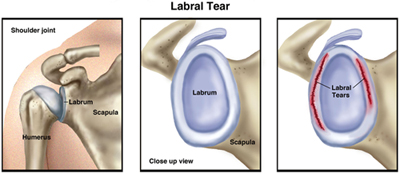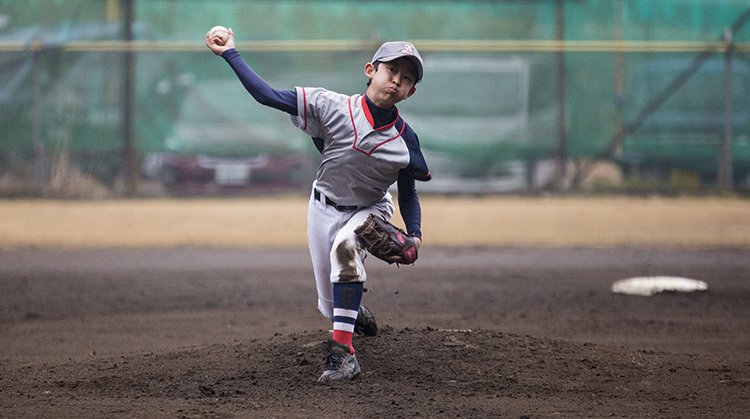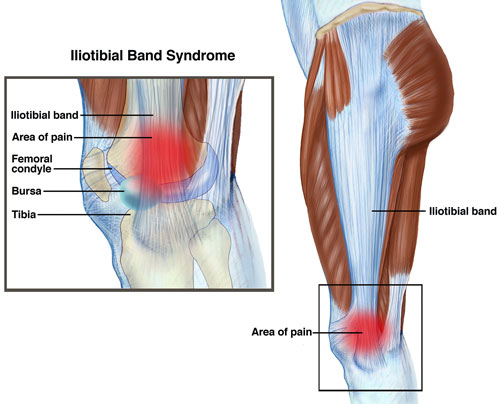Plantar fasciitis is a condition causing heel pain. Supporting the arch, the plantar fascia, a thick band of tissue connecting the heel to the ball of the foot, can become inflamed or can tear. You experience pain when you put weight on your foot—particularly when taking your first steps in the morning. The pain can be felt at the heel, or along the arch and the ball of the foot.
Plantar fasciitis is a common foot condition. It occurs in as many as 2 million Americans per year and 10% of the population over their lifetimes.
Factors that contribute to the development of plantar fasciitis include:
Age (over 40 years)
A job, sport, or hobby that involves prolonged standing or other weight-bearing activity
Rapid increases in length or levels of activity, such as beginning a new running program or changing to a job that requires a lot more standing or walking than you are accustomed to
Decreased calf muscle flexibility
Increased body weight (Body Mass Index greater than 30)
Tendency to have a flat foot (pronation)
Plantar fasciitis affects people of all ages, both athletes and non-athletes. Men and women have an equal chance of developing the condition.
Treatment generally reduces pain and restores your ability to put weight on your foot again.
What is Plantar Fasciitis?
Plantar fasciitis is a condition causing heel pain. Supporting the arch, the plantar fascia, a thick band of tissue connecting the heel to the ball of the foot, can become inflamed or can tear. The condition develops when repeated weight-bearing activities put a strain on the plantar fascia. People who are diagnosed with plantar fasciitis also may have heel spurs, a bony growth that forms on the heel bone. However, people with heel spurs may not experience pain.
Plantar fasciitis occurs most frequently in people in their 40s but can occur in all age groups.
The condition can develop in athletes who run a great deal and in non-athletes who are on their feet most of the day, such as police officers, cashiers, or restaurant workers.
Signs and Symptoms
The onset of symptoms of plantar fasciitis frequently occurs with a sudden increase in activity. You might feel a stabbing pain on the underside of your heel, and a sensation of tightness and/or tenderness along your arch.
People with plantar fasciitis may experience pain:
In the morning, when stepping out of bed and taking the first steps of the day
With prolonged standing
When standing up after sitting for awhile
After an intense weight-bearing activity such as running
When climbing stairs
When walking barefoot or in shoes with poor support
As your body warms up, your pain may actually decrease during the day but then worsen again toward the end of the day because of extended walking. Severe symptoms may cause you to limp.
How Is It Diagnosed?
The physical therapist’s diagnosis is based on your health and activity history and a clinical evaluation. Your therapist also will take a medical history to make sure that you do not have other possible conditions that may be causing the pain. Sharing information about the relationship of your symptoms to your work and recreation, and reporting any lifestyle changes, will help the physical therapist diagnose your condition and tailor a treatment program for your specific needs.
To diagnose plantar fasciitis, your therapist may conduct the following physical tests to see if symptoms occur:
Massaging and pressing on the heel area (palpation)
Gently stretching the ankle to bend the top of the foot toward the leg (dorsiflexion)
Gently pressing the toes toward the ankle
How Can a Physical Therapist Help?
Physical therapists are trained to evaluate and treat plantar fasciitis.
When you are diagnosed with plantar fasciitis, your physical therapist will work with you to develop a program to decrease your symptoms that may include:
Stretching exercises to improve the flexibility of your ankle and the plantar fascia
Use of a night splint to maintain correct ankle and toe positions
Selection of supportive footwear and/or shoe inserts that minimize foot pronation and reduce stress to the plantar fascia
Application of ice to decrease pain and inflammation
Iontophoresis (a gentle way to deliver medication through the skin)
Taping of the foot to provide short-term relief
Research shows that most cases of plantar fasciitis improve over time with these conservative treatments, and surgery is rarely required.
Can this Injury or Condition be Prevented?
Guidelines for the prevention or management of plantar fasciitis include:
Choosing shoes with good arch support
Replacing your shoes regularly, so that they offer arch support and provide shock absorption to your feet
Using a thick mat if you must stand in one place for much of the day
Applying good principles to your exercise program, such as including a warm-up and gradually building up the intensity and duration of your exercises to avoid straining the plantar fascia
Stretching your calves and feet before and after running or walking
Maintaining a healthy body weight
Real Life Experiences
Jason has worked as a cook in a restaurant kitchen for 5 years. He has gradually gained about 25 pounds over those years. He began to develop pain in both his heels about 2 months ago. He does not exercise.
Jason asks a friend who has received physical therapy for advice. His friend suggests he see a physical therapist to find the cause of his heel pain.
Jason's physical therapist conducts a detailed history, asking questions about his health, lifestyle, and work, and performs a thorough evaluation. Jason says that his heel pain is worst when he gets up in the morning. After a shower and walking around for a while, his pain diminishes. However, when he is cooking at the restaurant during the evening shift, his heel pain returns, extending to the balls of his feet. Due to food debris in the restaurant kitchen, Jason says he wears old beat-up sneakers to work.
After conducting a physical examination, Jason's therapist diagnoses plantar fasciitis. She teaches Jason several stretches to perform twice a day and designs a home exercise program that will fit his goals and lifestyle. The therapist recommends he choose a shoe with a good arch support and replace them when they are worn out. She also suggests an orthotic (shoe insert) to place into his new shoes. She instructs him to apply ice to the bottom of his feet several times throughout the day. The therapist does not prescribe a night splint at this time, because Jason has had symptoms for less than 3 months. The therapist recommends that for his general health, Jason begin a low-impact exercise program, including swimming and using an exercise bike. This will help him lose the excess weight he has gained without further aggravating his plantar fasciitis.
Jason follows the advice of his physical therapist. He purchases new footwear for work and performs the stretching exercises and icing as instructed. After 2 weeks, he is 90% pain-free. Jason keeps his follow-up visit with his physical therapist 1 month later to review his condition and adjust his home program.
What Kind of Physical Therapist Do I Need?
All physical therapists are prepared through education and experience to treat plantar fasciitis. However, you may want to consider:
A physical therapist who is experienced in treating people with orthopedic and sports injuries, particularly those with experience working with the ankle and foot
A physical therapist who is a board-certified clinical specialist or who completed a residency or fellowship in orthopedic or sports physical therapy, meaning that this therapist has advanced knowledge, experience, and skills that may apply to your condition
You can find physical therapists who have these and other credentials by using Find a PT, the online tool built by the American Physical Therapy Association to help you search for physical therapists with specific clinical expertise in your geographic area.
General tips when you're looking for a physical therapist (or any other health care provider):
Get recommendations from family and friends or from other health care providers.
When you contact a physical therapy clinic for an appointment, ask about the physical therapists' experience in helping people who have heel pain.
During your first visit with the physical therapist, be prepared to describe your symptoms in as much detail as possible, and say what makes your symptoms worse.
Further Reading
The American Physical Therapy Association (APTA) believes that consumers should have access to information that could help them make health care decisions and also prepare them for their visit with their health care provider.
The following articles provide some of the best scientific evidence related to physical therapy treatment of plantar fasciitis. The articles report recent research and give an overview of the standards of practice both in the United States and internationally. The article titles are linked either to a PubMed* abstract of the article or to free access of the full article, so that you can read it or print out a copy to bring with you to your health care provider.
Cole C, Seto C, Gazewood J. Plantar fasciitis: evidence-based review of diagnosis and therapy. Am Fam Physician. 2005;72:2237–2242. Free Article.
Irving DB, Cook JL, Young MA, Menz HB. Obesity and pronated foot type may increase the risk of chronic plantar heel pain: a matched case-control study. BMC Musculoskelet Disord. 2007;8:41. Free Article.
McPoil TG, Martin RL, Cornwall MW, et al. Heel pain—plantar fasciitis: clinical practice guildelines linked to the International Classification of Function, Disability and Health from the Orthopaedic Section of the American Physical Therapy Association [erratum in: J Orthop Sports Phys Ther. 2008;38:648]. J Orthop Sports Phys Ther. 2008;38:A1–A18. .
Riddle DL, Pulisic M, Pidcoe P, Johnson RE. Risk factors for plantar fasciitis: a matched case-control study [erratum in: J Bone Joint Surg Am. 2003;85-A:1338]. J Bone Joint Surg Am. 2003;85-A:872–877. Article Summary on PubMed.
Riddle DL, Schappert SM. Volume of ambulatory care visits and patterns of care for patients diagnosed with plantar fasciitis: a national study of medical doctors. Foot Ankle Int. 2004;25:303–310. Article Summary on PubMed.
Scher DL, Belmont PJ Jr, Bear R, et al. The incidence of plantar fasciitis in the United States military. J Bone Joint Surg Am. 2009;91:2867–872. Article Summary on PubMed.
*PubMed is a free online resource developed by the National Center for Biotechnology Information (NCBI). PubMed contains millions of citations to biomedical literature, including citations in the National Library of Medicine's MEDLINE database.
Authored by Shaw Bronner, PT, PhD, OCS. Reviewed by the MoveForwardPT.com editorial board.







